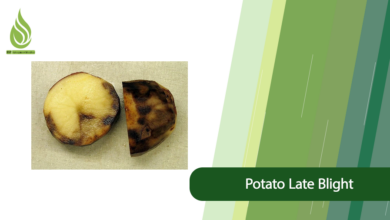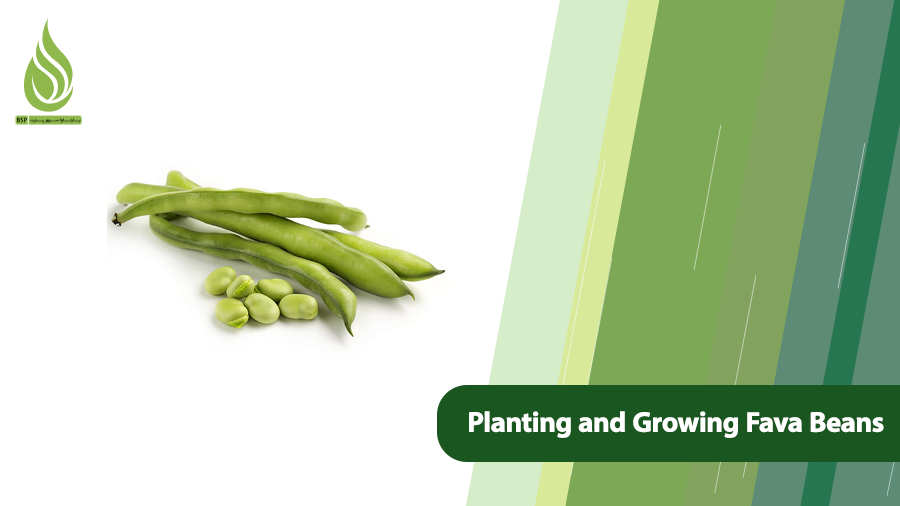
A Comprehensive Guide to Planting and Growing Fava Beans
Fava beans are a highly valued crop. Not only are they a great food source, but as a legume, they also help improve soil quality. You can easily grow fava beans in your garden or farm with the right care and cultivation methods. In this article, we will explain everything you need to know about planting and nurturing fava beans.
Understanding the Characteristics and Benefits of Fava Beans
Fava beans, also known as broad beans, are a popular and nutritious legume grown in many parts of the world. They are an excellent source of plant-based protein, fiber, vitamins, and minerals. Fava beans contain B vitamins, vitamin C, and essential minerals like iron and magnesium.
Some amazing benefits of fava beans include lowering cholesterol, maintaining heart health, regulating blood sugar levels, boosting the immune system, improving digestive health, aiding weight loss, and enhancing brain function and memory. Given these attributes and benefits, fava beans can be a valuable part of a healthy and balanced diet, contributing to an improved quality of life.
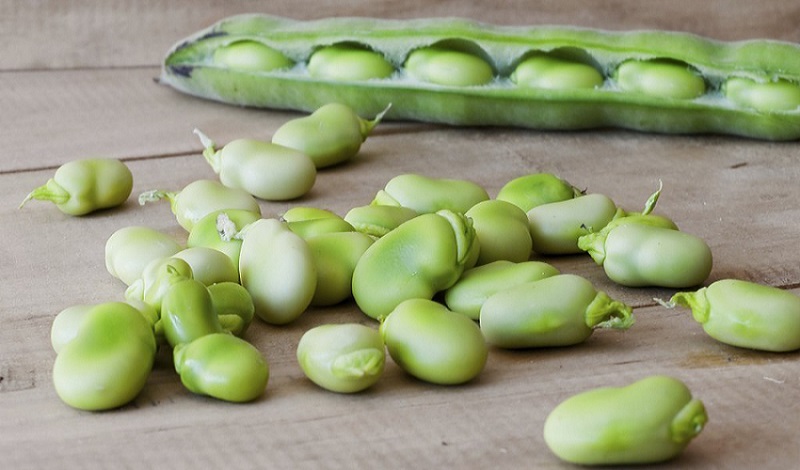
Fava beans are a resilient plant that can be grown in various climate conditions. They thrive in well-drained soil and need plenty of sunlight. This crop is one of the legumes that can grow in cooler temperatures, making it known as a cold-resistant plant.
Fava beans help retain soil moisture and improve soil quality. When grown in rotation with other plants, they enhance soil health and reduce contamination. One of the fava bean’s special abilities is nitrogen fixation. This process happens because of rhizobium bacteria found in the plant’s roots. These bacteria convert gaseous nitrogen from the air into usable forms for plants (like ammonium nitrogen). By increasing the nitrogen levels in the soil, fava beans and other legumes enhance soil quality and fertility.
What conditions should the soil have for planting fava beans?
Choosing the right land for growing fava beans is very important. Here, we’ll explain the ideal soil and land conditions for planting and nurturing fava beans.
- Soil Type: Fava beans are sensitive to standing water, so the soil needs to have good drainage to prevent water buildup. Loamy soil, which is a mix of sand, silt, and clay, is the best choice for planting fava beans. When watering, it’s important to keep the soil consistently moist but not soggy.
- Soil pH: The pH level of the soil is crucial for the optimal growth of fava beans. The soil should have a pH between 6 and 7. If the pH is too low, it can hinder the absorption of nutrients like calcium and magnesium, affecting plant growth. On the other hand, if the pH is too high, it can interfere with the absorption of iron and other micronutrients.
- Nutrient-Rich Soil: The soil where you plant fava beans should be rich in various nutrients, especially nitrogen. While fava beans can help increase nitrogen in the soil as legumes, they still need nutrients initially. You can use organic or inorganic fertilizers to enhance soil quality.
- Adequate Sunlight: Fava beans require direct sunlight for optimal growth, needing about 6 to 8 hours of sunlight each day.
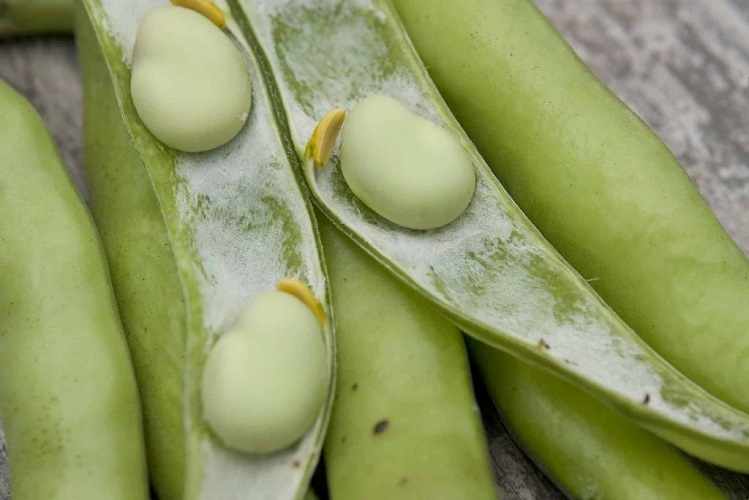
- Ideal Temperature: Fava beans grow best in cool temperatures, specifically between 5 and 25 degrees Celsius (41 to 77 degrees Fahrenheit). If the temperature drops below freezing, there’s a risk of losing the plants.
- Watering: Fava beans need a moderate amount of water, and their water requirements change during different growth stages. They need the most water during germination, flowering, and seed formation. The frequency of watering depends on the weather, humidity levels, and soil texture. On average, you should water the plants every 5 to 7 days. The best method for watering is drip irrigation, as it delivers water directly to the roots and helps prevent waste. It’s crucial to avoid waterlogging and excessive moisture in the soil, as these conditions can lead to diseases and root rot.
- Weed Control: Before planting, make sure there are no weeds in the area, as they can compete with fava beans for nutrients and hinder their growth. After planting, you should remove weeds when the plants have 4 to 6 leaves. Once you’ve cleared the weeds, water the field again.
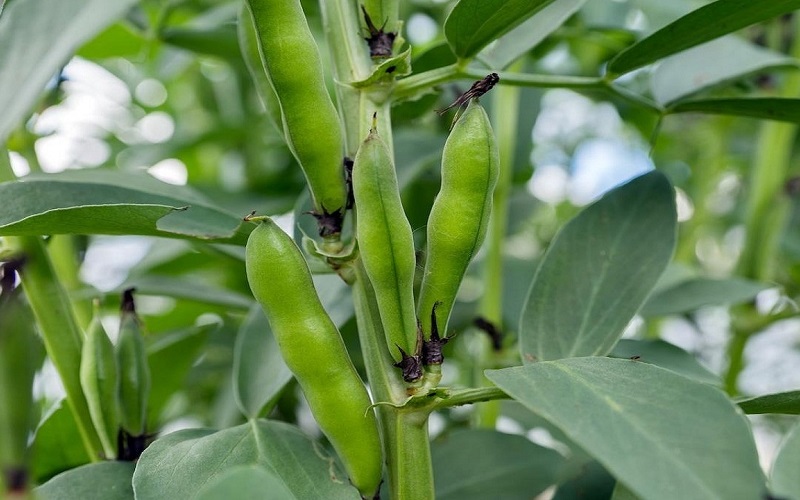
The Right Time to Plant Fava Beans
Fava beans are typically planted in the spring. Depending on the region and climate, planting can take place from mid-March to early May. In warmer and temperate areas, fava beans are usually planted in March and April. However, in cooler regions, planting is postponed until late April or early May. The ideal temperature for planting fava beans is between 5 and 25 degrees Celsius (41 to 77 degrees Fahrenheit). Fava beans are cold-resistant and can tolerate lower temperatures.
Fava beans are generally ready for harvest about 80 to 120 days after planting. However, the exact timing for harvesting depends on the type of fava bean seed, weather conditions, and the care given in terms of nutrition and watering. Fava beans should be harvested when the pods are well-filled, and their color has changed to dark green or brown. Additionally, the pods should be soft and easily breakable.
Methods for Planting and Harvesting Fava Beans
Planting Methods for Fava Beans
Fava beans can be planted in two main ways: direct seeding and transplanting seedlings.
- Direct Seeding: In this method, seeds are planted directly into the soil. First, you need to prepare the agricultural land before planting. After improving the soil and tilling the land, create planting rows with a spacing of 30 to 40 centimeters (about 12 to 16 inches) apart. Then, place the seeds in the ground at a depth of 5 to 7 centimeters (about 2 to 3 inches).
- To get the seeds ready, soak them in warm water for 24 hours before planting. Water the prepared soil and then plant the seeds. Typically, you will need about 200 to 300 kilograms (440 to 660 pounds) of seeds per hectare (about 2.5 acres). After planting, avoid overwatering the soil until the plants begin to sprout. Too much water before germination can cause the seeds to rot and prevent the plants from growing.
- Transplanting Seedlings: The second method for planting fava beans involves starting the seeds in a controlled environment, like a greenhouse, before transferring the seedlings to the main field. Usually, the seedlings are moved to the main ground about 4 to 6 weeks after being grown in a controlled environment.
Harvesting Fava Beans
Fava beans can be harvested in two main ways:
- Green Harvesting: This method involves picking the fava beans when the seeds inside the pods are fully developed, and the pods are still soft. It’s important to harvest them before the pods dry out completely.
- Dry Harvesting: In this method, the goal is to collect dry fava beans. This is done after the pods on thez plants have completely dried. Once dried, the entire plants are pulled up and gathered in a location for threshing, which is the process of separating the beans from the pods.
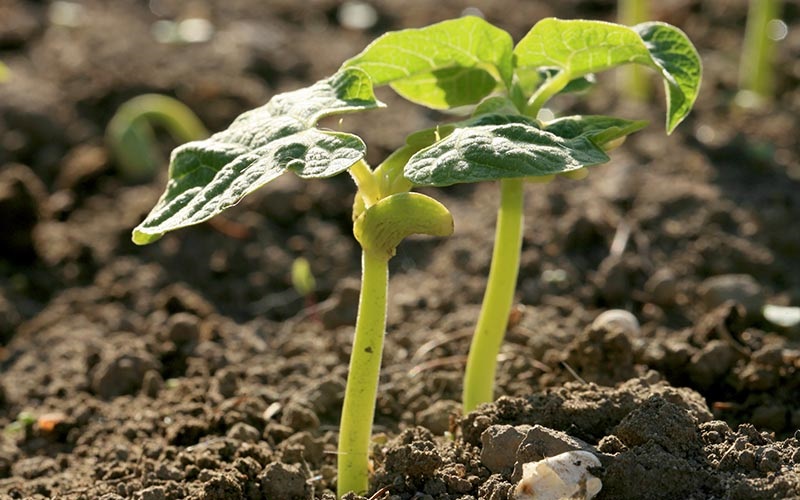
Fertilizing Fava Beans (From Planting to Harvest)
Proper fertilization of fava beans is essential for improving their growth and yield. Here’s a simple overview of the fertilization process:
- Before Planting: Before you plant fava beans, it’s important to take soil samples and send them to a soil lab for analysis. This testing helps determine the nutrient levels in your soil, so you can understand any deficiencies and create a suitable plan to address them. The soil test will also reveal the pH level. If the pH is low, you can use lime to raise it. If the soil is too alkaline, you should apply sulfur to help balance the pH.
- Base Fertilization: At this stage, organic fertilizers, such as animal manure and compost, should be added to the soil. These organic materials enhance soil structure and increase nutrient content. Depending on the type of land and crop rotation, you can apply 20 to 30 tons of animal manure per hectare (about 2.5 acres).
- Mineral Fertilization: Based on the soil’s needs and deficiencies, you should provide the necessary nutrients for the plants. Key nutrients include nitrogen, phosphorus, potassium, magnesium, calcium, and micronutrients. Typically, you’ll need about 100 kilograms of nitrogen, 80 kilograms of phosphorus, and 200 kilograms of potassium per hectare. The timing and amount of these nutrients should be tailored based on the soil test results.
During the leaf growth stage, it’s important to supply nitrogen to the plants. Nitrogen fertilizers help improve growth and increase the yield of fava beans. Ammonium sulfate is commonly used for this purpose. It’s best to apply nitrogen in two stages: once when preparing the soil and once during the leaf growth stage. In the later stages of growth, you can use fertilizers rich in potassium and phosphorus to enhance the quality of the beans and pods.
